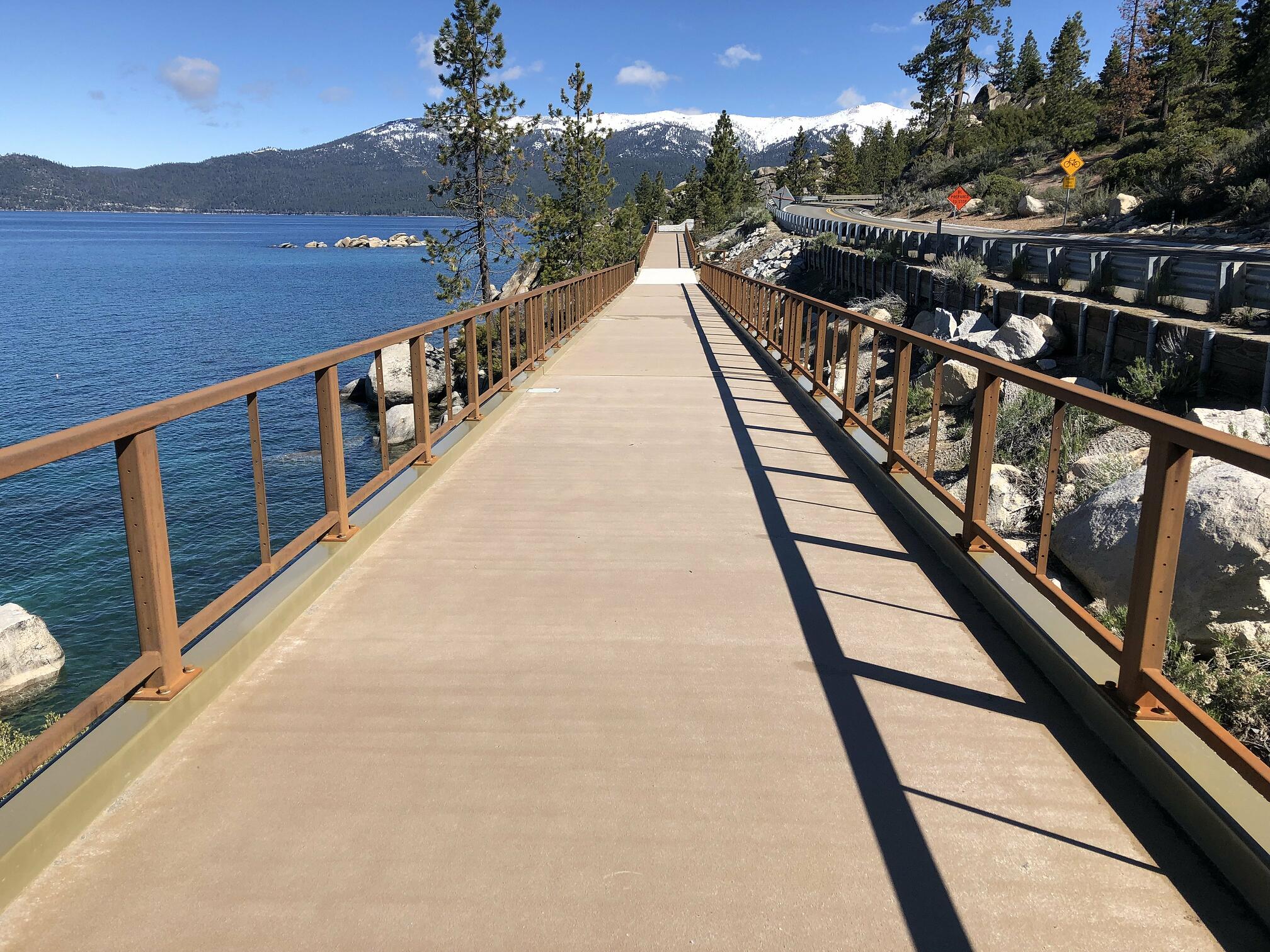
Nevada Department of Transportation (NDOT) has chosen a fiber reinforced polymer (FRP) system as part of the state’s Route 28.
The agency chose Composite Advantage’s FiberSPAN system to help it construct a shared-use path on the region’s rocky uneven slopes.
Each bridge span section was delivered as a prefabricated unit of steel beams, FRP deck and railing. The FRP decks were 134 inches wide with a 5 inch structural thickness at the thinnest section with a 1% cross slope. The panels were coated with a 1/8 inch non-slip polymer aggregate surface.
In most FRP bridge applications the steel support beams or trusses provide the primary load carrying structure, but in this case the company had to design FRP sections to act as the shear diaphragm for the stringers, Composite Advantage said. It then bonded the connection between the deck and steel beams with structural methyl methacrylate adhesive to permit shear transfer between the steel and FRP.
Thirty-two 40-foot bridge span sections were installed on an 11-mile section of the path, and the spans were grouped to create five distinct bridges.
‘Our FRP pedestrian bridge deck system was used in areas where the slope was too steep to provide flat walking surfaces,’ says Composite Advantage president Scott Reeve. ‘The scope of the project meant FRP had to take on a larger role in terms of performance.’
This story uses material from Composite Advantage, with editorial changes made by Materials Today. The views expressed in this article do not necessarily represent those of Elsevier.






